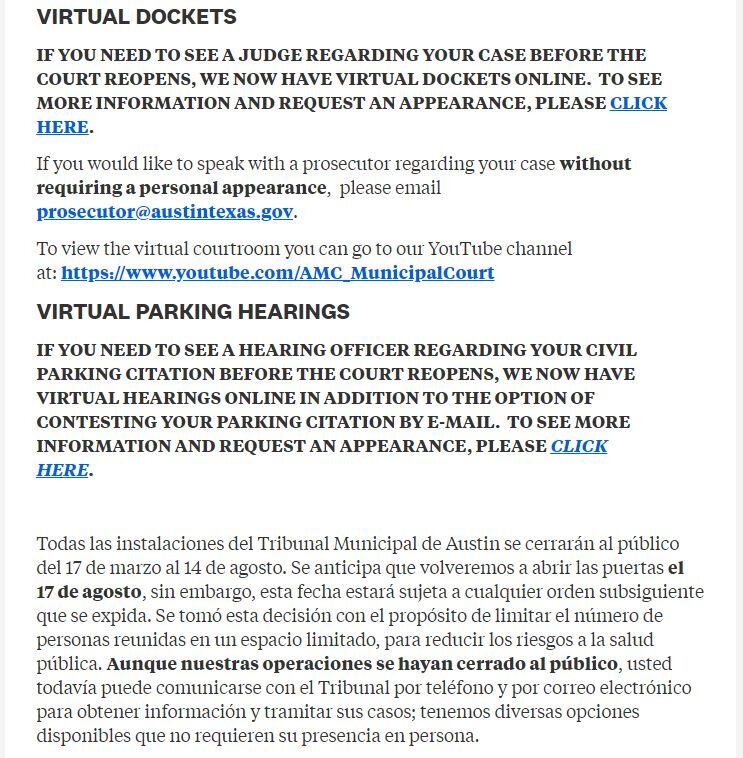Accessible digital services for Municipal Court
The problem
The Austin Municipal Court had a long-standing commitment to accessibility, but their website had become a filing cabinet that court clerks would guide people through when they needed to handle a ticket.
all of the forms were PDFs
a lot of the PDFs were outdated
the CMS did not support bilingual content
there was a lot of legalese
The project
Learn from the friendly, knowledgeable way front-line court staff interacted with residents and bring that to the court’s digital content.
Along the way, make 40+ court services digital, thanks COVID!
We went from a hundreds of PDFs to 42 easy-to-use online forms.
My role
Liaise with subject matter experts to learn about the services and requirements of the court and translate them into service-oriented plain language web pages.
Work with court interpreters and bilingual staff to create a translation memory so that the Spanish web copy was also a low reading level and terminology was standardized across the content.
Help create a usability testing plan for the new content.
Communicate about the project with various levels of stakeholders across the organization.
Explaining things in plain language, internally
Here’s a video I made to explain to high level stakeholders the importance and function of the way we designed service pages.

